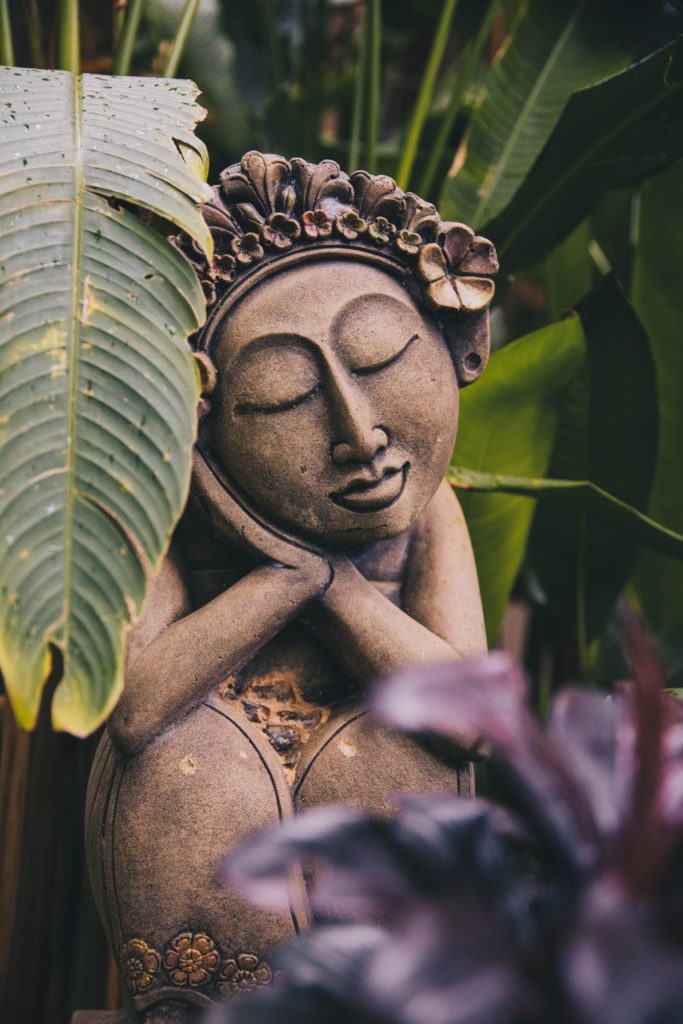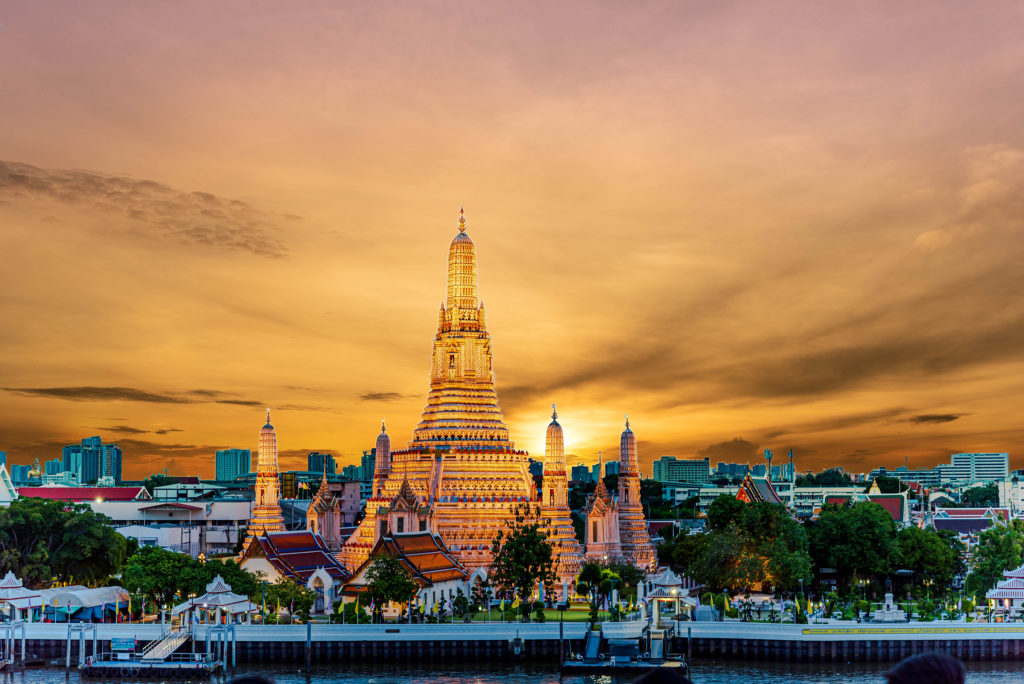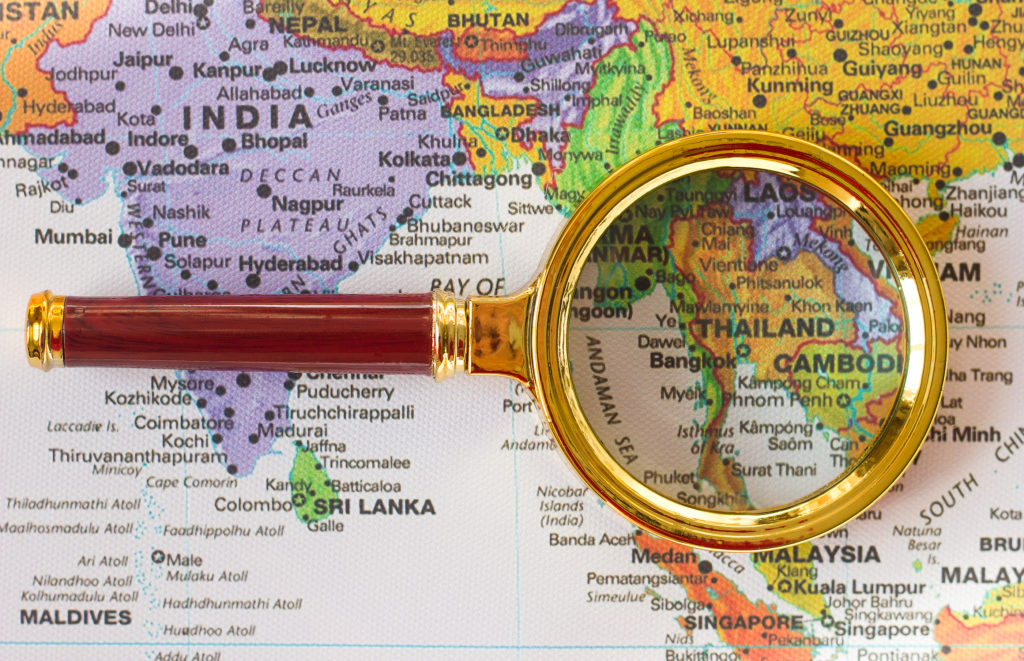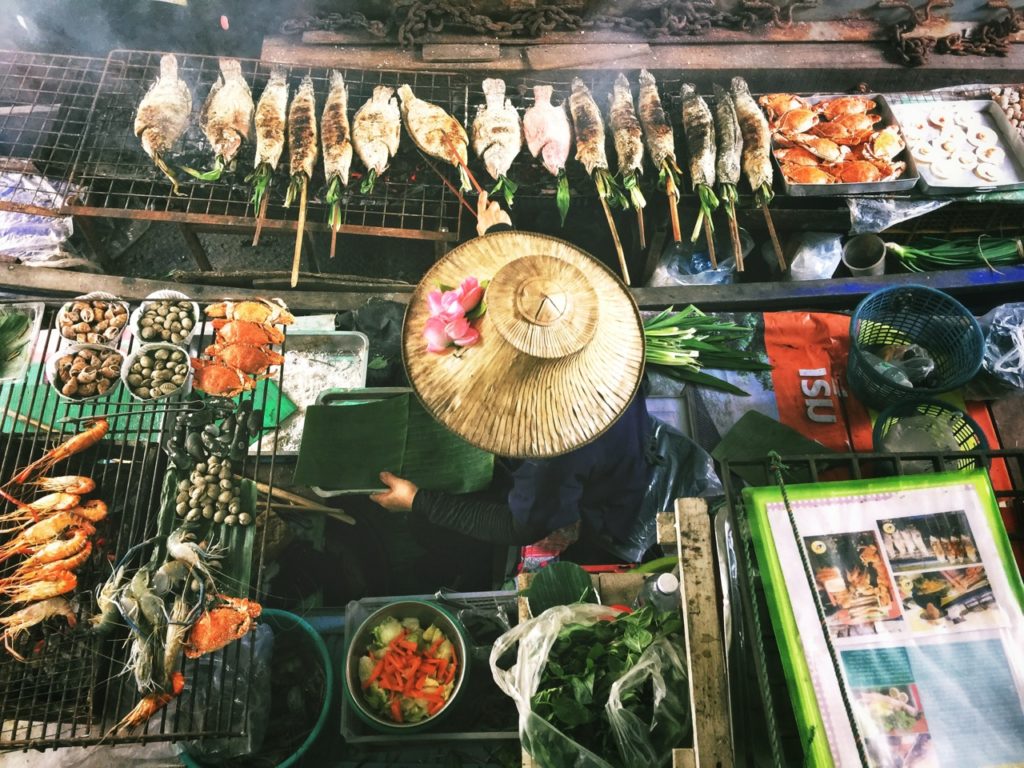When people know you’re “well traveled” they make assumptions. Rather than ask you, “Have you been to a particular destination” they’ll ask, “How did you like a place?” When they ask me about Thailand, I ask them if they are in a rush because I have lots to share!
Due to the pandemic, travel is now pushed forward. However, a return trip to Thailand was in the planning stages when the pandemic began. Now it’s on hold. However, my trip planning was done and my interest in history and culture never stops!
As I learn, I share, so thought it would be fun to write about some of the fascinating things I learned about Thailand and lead you on this, for now, armchair tour of this extraordinary culture and destination. I’ve found some beautiful images and fascinating videos to share with you.
You might just want to add Thailand to your post-pandemic bucket list of places to visit or perhaps like me, revisit.
Thailand: What Makes It So Unique?
Thailand is a gem of Southeast Asia. It is blessed with gorgeous green mountains and miles of rivers, pristine beaches, and the exciting metropolis of Bangkok (to name a few natural and human-made highlights).
The national religion is Buddhism, which Thai people observe throughout the land. It is one of the few countries in the world that still follows a monarch (he is King Maha Vajiralongkorn). And Thailand has never been conquered by another country; it has always been its own nation.

Thailand sculpture reflects its Buddhist religion
I hope these first interesting facts have hooked you into reading on. This background on the wonders of Thailand will prime you for your Thai adventures!
Thailand Natural and Human History
The Kingdom of Thailand is surrounded by four other southeast Asian countries: Malaysia, Cambodia, Laos, and Myanmar. It is about three times as big as the state of Florida (nearly twice as big as Wyoming). More than 69 million people live in Thailand today.
Anthropologists believe that the earliest Thai people emerged from what is now northwestern Vietnam. But some Thai culture can be traced to contact with the Chinese dating back many centuries. Because of Thailand’s central location in Southeast Asia, it has been a crossroads for Asian cultures to meet.
Pro Tip: Be sure to get the best deals on hotels. If I’m paying cash for a hotel stay, I always use Pruvo to monitor for price drops!
Thailand is located in the monsoon zone of Southeast Asia. It rains a lot! This contributes to its fertile landscape. It is a country of wetlands, forests, and grasslands. Thai people still use water buffalo for transportation and carrying heavy loads along their river waterways.
For centuries, Thai wildlife included herds of wild elephants, rhinoceroses, tapirs, gibbons, and more. Now these animals have largely disappeared due to deforestation in Thailand as well as illegal trading of some of these endangered species. In fact, Thailand was mainly an agricultural country up until the past 40 years.
The vast majority of people in Thailand (95%) are of Thai ethnicity, but there are also non-Thai groups. These include an indigenous minority that speak Malay. Other ethnic minorities speak Mon and Khmer. In fact, the Mon Khmer ethnic group can be found in northeastern Thailand. They are related to the Khmer people of Cambodia. The Kuy people have been known as elephant hunters, a skill that has transformed into being elephant trainers. The Mon people are thought to be have migrated from Myanmar between 1700 and 1900s.
Religion in Thailand: Buddhism 101
Thailand is a Buddhist country, following the Thervada tradition. This came from Sri Lanka, and can also be found throughout Laos, Cambodia, and Myanmar, as well as parts of southern China and southern Vietnam.
Buddhism is a not just a religion in Thailand. You could also classify it as a way of life.
Pardon this vast oversimplification, but here are some principles of Thai Buddhism.
All Buddhist traditions start with the teachings of the Indian Siddhartha Gautama. He was a prince raised in luxury, who,, as a young man, observed the suffering of others and devoted his life to understanding why. He renounced his title and worldly possessions, and became a monk whose goal was to lead others to enlightenment.
Buddha defined Four Noble Truths: suffering, the cause of suffering, the end of suffering, and the path that leads to the end of suffering. The root of suffering lies within desire and ignorance. Desire is attachment to what we want in life; ignorance refers to our inability to see the world as it really is.
Buddha teaches that the end of suffering involves a spiritual life on earth, but also in a spiritual place he called Nirvana. To achieve Nirvana, Buddha described a “Noble eightfold path”:
- Know the truth.
- Say nothing to hurt others.
- Practice meditation.
- Control your thoughts.
- Resist evil.
- Free your mind of evil.
- Work for the good of others.
- Respect life.
Thai Buddhism borrows some spiritual beliefs from Hindu teachings. Many homes and businesses (“spirit houses”) make offerings to the spirits. Many Thai Buddhists burn incense and pray to images of Buddha or Hindu gods, visiting shrines throughout the countryside and in Bangkok.
Most Thai settlements throughout the country have at least one wat, or temple monastery feature a community of monks. Thai Buddhist monks live in these wats, wear yellow robes, and conduct rituals with the people of the community. There are more than 30,000 wats in Thailand today, showing the continuing importance of monastic life. Many males spend some portion of their lives in a wat, learning the meditation techniques and philosophy that lead to enlightenment (sometimes it is also referred to as self-liberation).
Monks throughout Thailand teach laypeople in their communities. The relationship is strong between laypeople and monks; the monks rely on their community for food, medicine, and other necessities. The people of Thailand rely on their Buddhist teachers in order to live by the Four Noble Truths (and ultimately improve their chances upon reincarnation).

Thailand Wat Arun Temple at sunset in Bangkok.
Most important, Buddhism has influenced the very character of Thailand and its people. Thai people are recognized for their tolerance of others, their openness, and their compassion. Buddhism still plays a major role in shaping cultural life, and Thais honor the Buddhist holy days.
Respecting Thai Royalty
There is another major influence to mention as well: loyalty to the monarchy. Even today, Thai people respect their king, and his moves are widely televised and tracked on social media.
Thailand has been a kingdom for many centuries—it was unified in the 1300s, and became a constitutional monarchy in 1932. Even though the royal presence is central in Thailand today, political authority still remains with the military.
The current king has quite a reputation.
He is thought to be the richest monarch in the world, and his wealth is valued at $30 billion. The king received his education abroad, in the U.K. and Australia, and later became an officer in the Thai armed forces. He is both a trained fighter pilot and a civilian pilot who even flies his own Boeing 737. His wealth is based on real estate holdings and other investments. He has been married 4 times.
Power and Politics: Thailand during World War II
The relationship between the monarchy and the military, as you can imagine, has created considerable tension over the years. The period around World War II is especially telling, as the government saw the opportunity to join with Japan in its hunger for power and land.
Thailand joined the Japanese during World War II because it promised to help Thailand re-take several Indochinese territories claimed by the French earlier in the 1900s. Thailand declared war on the United States and the United Kingdom, and took advantage of expanding its borders in all directions.
The government of Thailand split into two groups—the Phibun regime (allied with Japan), and the Free Thai Movement, a guerrilla resistance movement that assisted the Allied forces. The Phibun regime, led by Major General Plaek Phibunsongkhram, became increasingly more fascist and authoritarian as the war progressed. Phibun changed the country’s name from Siam to Thai in 1939. This reflected a move toward nationalism, against ethnic diversity (referring to the Malay, Chinese, and Lao minority groups).

Thailand, Bangkok on a map of Asia
As World War II progressed, the Japanese used Thailand as a staging area for invasions of Burma and Malaya. Allied planes bombed Bangkok and other parts of Thailand. In 1942, taking advantage of it allegiance with the Japanese as well as British and Chinese withdrawal from Burma, the Thai Army crossed the Chinese border.
At the end World War II, the Phibun government collapsed. In 1944, the new government of Khuang Aphaiwong returned all lands it had claimed during the war. In return, Thailand was allowed to join the United Nations.
Bangkok: The Emergence of Modern Thailand
Thai society continues to modernize and evolve. Thailand has experienced a shift to industrialization since before the Second World War. As Thailand modernized, an increasing number of people left the agrarian ways of the countryside and found fortune in Bangkok.
Thailand’s overall population continues to grow, and the economy is strong. It is the largest exporter of rice in the world, and also leads exports of textiles and electronics.
Almost 11 million people live in Bangkok today. The architecture and art of Bangkok feature spectacular temples, shrines, modern skyscrapers, and vast state-of-the-arts shopping malls.
Going back a ways, Bangkok became the capital of “Siam” in 1782. Bangkok is the short name, at any rate. The formal Thai words, Krung Thep, start off the official and verbose description that means “the City of Gods, the Great City, the Residence of the Emerald Buddha, the Impregnable City”….you get the picture. Thai people have tremendous pride in their capital.
Visitors can still experience traces of centuries past, when the Chakkri dynasty established a walled, Grand Palace complex and the temple Wat Pho. The city continued to grow through several monarchs in the 1800s, when the river and canal system was connected.
Foreign influence introduced new styles of business and architecture to the development of Bangkok. In the early 1900s, as the automobile made its appearance, city walls came down and the government built modern roads.
As Bangkok entered the modern age, the beautiful tradition of ornate decoration was preserved in the new buildings and temples around the city. Buildings and bridges followed the more European style of the French and Italian builders. At the same time, hundreds of wats can be found throughout Bangkok. Most are lavishly decorated, and are still the center of cultural and religious life.
Since WWII, Bangkok experienced tremendous growth. This posed challenges as well as financial boon. Transportation and traffic issues persist, and there are also problems in keeping up with housing, water, and pollution.
Because of its proximity to Vietnam, U.S. military personnel “discovered” Bangkok, which boosted Thailand’s tourism industry. Unfortunately, part of Thailand’s reputation was due to the nightclubs and sex trade. This is still present in Thailand, but there are many other attractions that draw visitors to the region.
Thailand’s Call for Reform
While Thailand is considered a peaceful and stable country, there have been recent calls for change in the government.
The Thai government has undergone a series of protests and reorganizations over the past two decades. Most recently, in spring of 2010 there was a major clash between anti-government protesters called the United Front for Democracy against Dictatorship (also called “Red Shirts”). Reports say that more than 2,000 protesters were injured in the clashes, and 90 people died.
Thais were protesting what they called a corrupt and dysfunctional system, the conflict between urban and rural communities, and overall failure to protect human rights. Violence escalated on both sides.
In the end, the protesters failed to achieve their goals of reforming the Thai government. They were ultimately overpowered by military force. However, the incident brought international attention to class disparity issues in Thailand. The United Nations Human Rights Committee condemned the Government of Thailand and ordered an inquiry into the May 2010 conflict.

Food in Thailand cooked fresh at the markets
Final Thoughts
It’s not too soon to contemplate your first post-pandemic travel destination……after all, we’ll be traveling again one of these days and hopefully sooner than later!
If this voyage has whet your travel appetite, you might start planning now.
To return to the question I posed at the beginning of this post: what makes Thailand so unique? It comes back in part to the character of the Thai people. National pride is central to the Thai psyche. The country clings to pride that it’s the only nation in Southeast Asia to have never been colonized by European countries.
The national anthem plays twice a day, with the expectation that people will stop and stand until the song has finished. The flag flies high across the country, raised with the national anthem each morning and lowered again in the evening. The King’s anthem is played before movies start in cinemas.
Yet the Thais also welcome foreigners, and gladly share their traditions, history, and religious customs. And I haven’t even mentioned the delicious cuisine. Perhaps that’s a good note to end on, as it’s somewhat symbolic of its people: influenced by other cultures (noodles from China, spices from India…), based on what grows in the soil (coconut milk, chile, garlic, and rice of course), and offering a pleasing blend of sweet and sour, mild and spicy.
There is much to learn, discover, and enjoy about Thailand! Have you been to Thailand? Feel free to share your impressions!
Related Posts:
- These Hacks Save Money on Every Hotel Stay
- Use Google Flights to Get the Cheapest Fares
- 9 Awesome Travel Accessories To Pack for Your Next Trip
- My Favorite Travel Resources and Products
- Take A Magic Carpet Ride Through Turkey
- Reviews of the best hotel choices in Bangkok
The responses below are not provided or commissioned by the bank advertiser. Responses have not been reviewed, approved or otherwise endorsed by the bank advertiser. It is not the bank advertiser's responsibility to ensure all posts and/or questions are answered.
2 comments
I spent 6 weeks in Thailand in April/May. Only 7 day Q at the time for vaccinated travelers. Koh Sok National was empty. Stayed at Conrad and Cape Fahn at Koh Samui and was the only guest at times.
Great time to travel there!
Great to know. Thanks for sharing your experience and for reading!